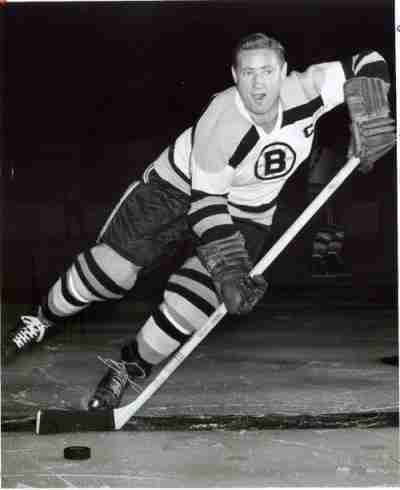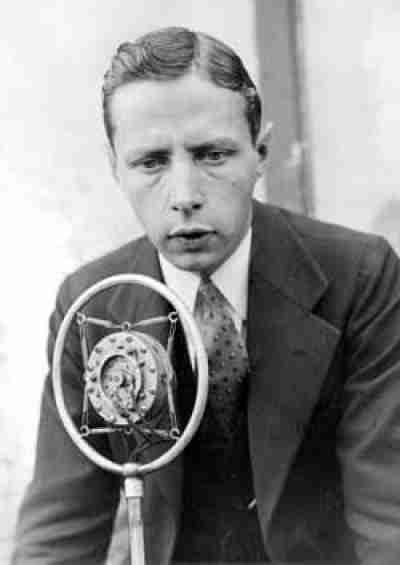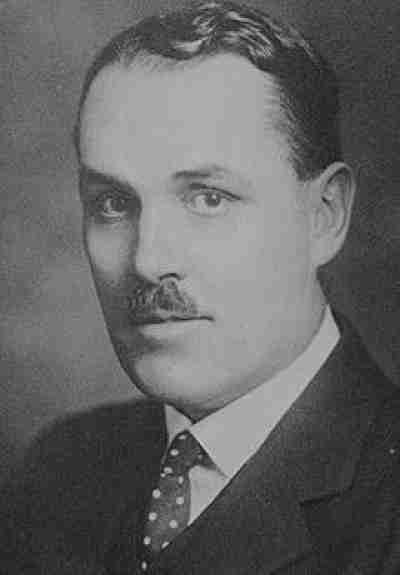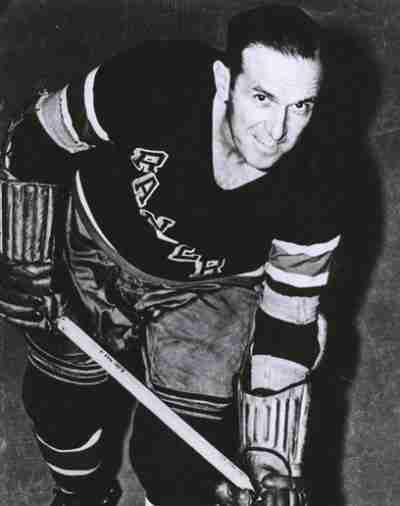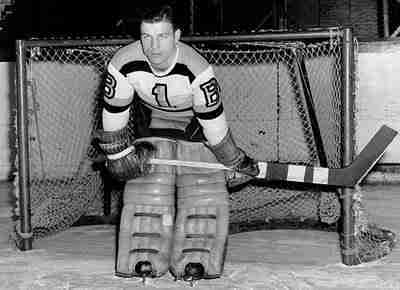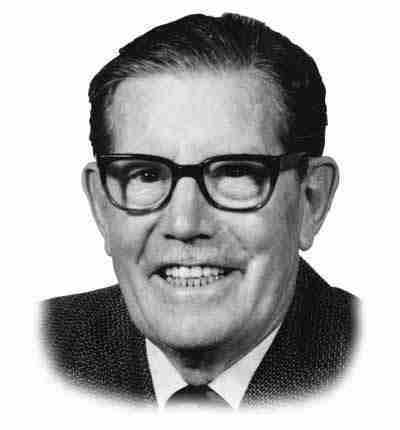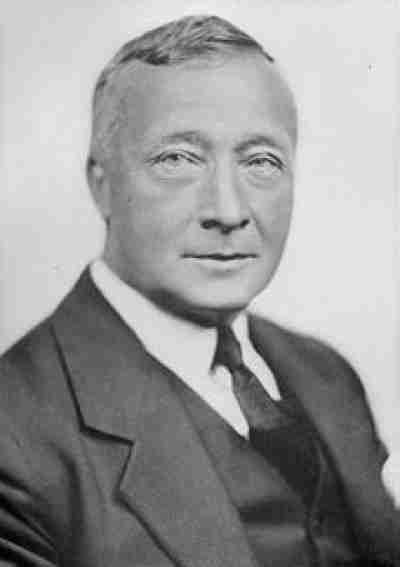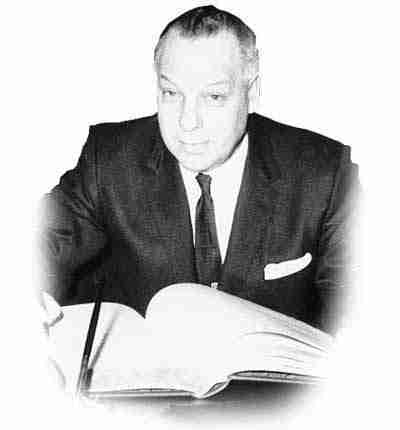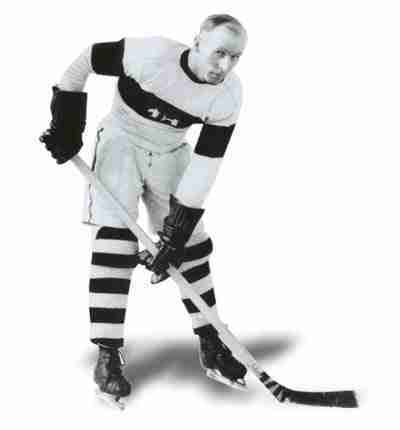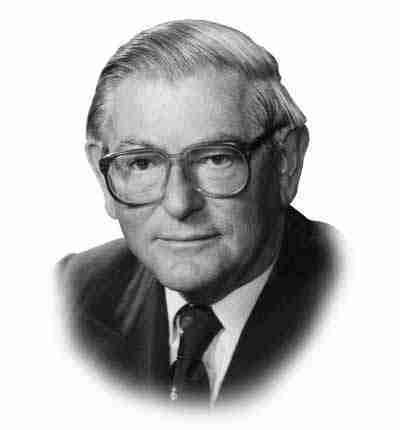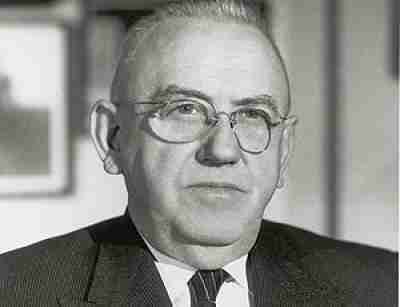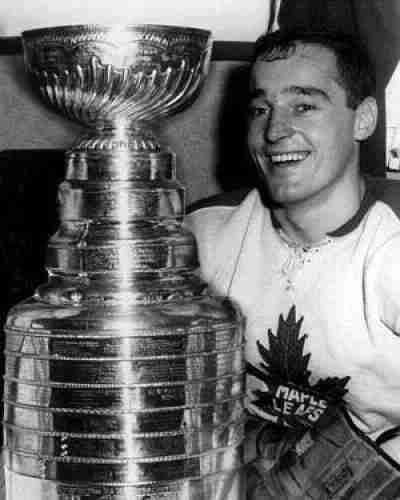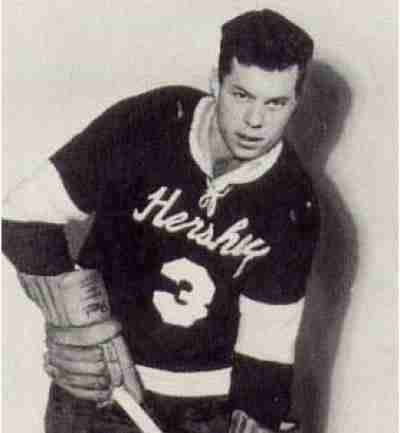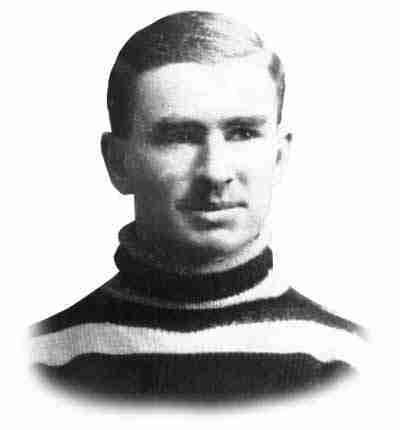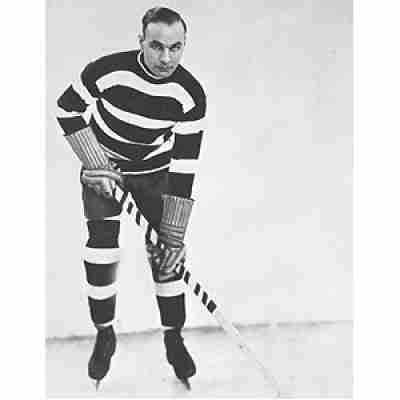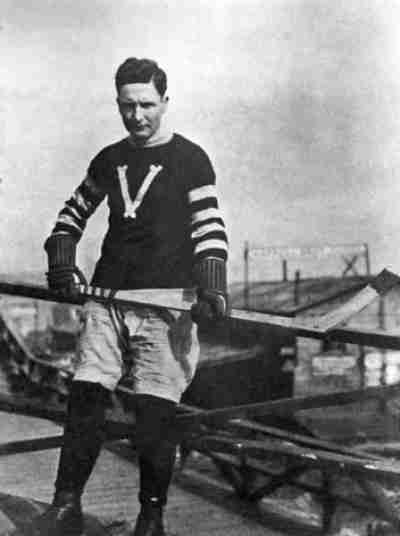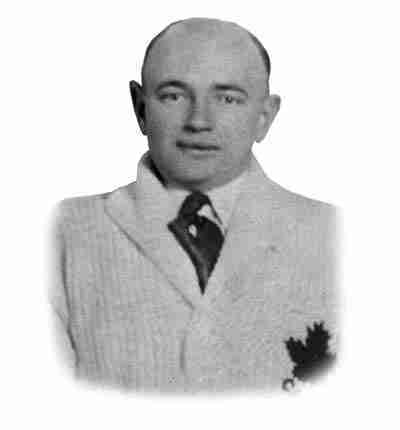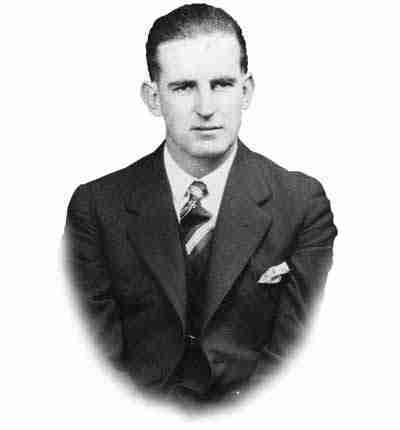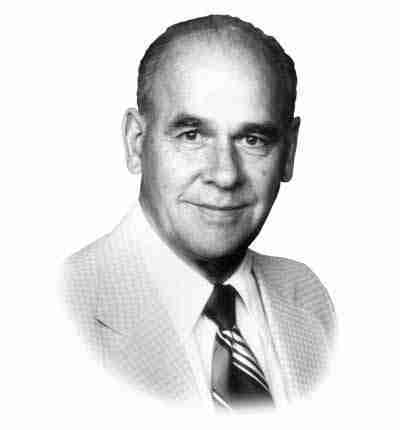This is actually the first Veteran Category induction we like. Fern Flaman was a rough and tumble Defenceman with hard hitting acumen that made him one of the better blueliners of the 1950’s. Flaman entered the NHL early at the age of 18 when World War II thinned the ranks, but he proved he was there to stay when the big boys returned. He was a three time Second Team All Star and suited up in the All Star Game five times. Flaman also showed his leadership, by captaining the Boston Bruins for a solid four year stretch. Although we have been critical of the Hockey Hall of Fame for the previous two Veteran Category inductees, we again state that we like the third.
The son of Hockey Hall of Fame inductee, W.A. Hewitt, Foster Hewitt was the first voice of Hockey for a generation of Canadians. Hewitt was the radio broadcaster for the Toronto Maple Leafs and his signature calls was the stuff of legends. On November 1, 1952, he broadcast the first nationally televised Hockey game which naturally was between Toronto and the Montreal Canadians. He would pass on the play by play duties to his son a few years later, and subsequently retire. He would however be lured back to the broadcast booth to call the Canada/Soviet Union Summit Series in 1972. Fathers got to listen to the man that introduced them to Hockey and sons understood why Hewitt was one of the great broadcasters of all time.
Many members of the 1920’s Ottawa Senators are in the Hockey Hall of Fame, so it should not be a large surprise that the owner of that team, Frank Ahearn was also inducted. His love of the game and ability to assemble winning rosters gave pride to the hockey mad capital of Canada. Ahearn tried to keep his team afloat in the 30’s, but due to the Great Depression and the small size of Ottawa, he was unable to keep the team alive.
Landing with the New York Rangers after the demise of the PCHL may have been the best thing to happen to Frank Boucher. He immediately centered the Cook brothers (Bill & Bun) to form the “Bread Line” which was one of the most productive of the era. In addition to being a gifted playmaker (he led the NHL in assists three times) Boucher was a class act who won the Lady Byng Trophy seven times on his stint on Broadway. His trophy case also had three First Team NHL All Star selections and two Stanley Cups with New York. It had to be easy to induct Boucher so that he could again join his linemate, Bill Cook who was inducted six years previously.
With the very cool nickname of “Mr. Zero” Frank Brimsek was a two time Vezina Trophy winner and is one of the greatest American Goalies of all time. Brimsek was consistently named to Post Season All Star teams and was a two time Stanley Cup champion with the Boston Bruins. Fittingly, Brimsek was inducted into the first class of the United States Hockey Hall of Fame which is located in his hometown of Eveleth, Minnesota.
A dedicated administrator to Amateur Hockey in Ontario, Frank Buckland worked his way into the Ontario Hockey Association and would serve a two year term as its President. He would also be the organization’s treasurer for a fifteen year span and was considered one of the most efficient executives they ever had. As the OHA has always been a big part of the growth of Hockey, it is not hard to understand why any beloved executive of that association would get a look from the Hockey Hall of Fame.
The first President of the National Hockey League, Frank Calder navigated through the troubled times of the league’s early days and was one of the game’s first true visionaries. It was not easy, as he faced two World Wars, the Great Depression and of course NHL owners! Calder’s love of the game and dedication to it is honored annually with the awarding of the Calder Trophy given to NHL’s top Rookie.
Frank Dilio served as the President of the Quebec Amateur Hockey Association for twenty years. During that tenure, he also was the Secretary of that organization for half of that time and was also the official scorer for the Quebec Senior Hockey League for a period of time. Dilio’s entire professional career was dedicated to growing the sport in the French Canadian province which made it a worthy induction.
“Frank the Flash” Foyston was a natural sniper who was one of the first players (only ten ever have) to hoist the Stanley Cup with three different teams. A very capable goal scorer, Foyston was one of the first to net 200 goals in a professional career, and his versatility enabled him to be an asset for numerous squads. Although he may not be someone who is equated with legends, his overall body of work does equate to a Toronto induction.
In can be easily stated that Frank Fredrickson’s Hall of Fame resume; is equal parts amateur and professional. As an amateur player, Fredrickson led his Winnipeg Falcons to the Allan Cup and subsequently the Gold Medal in the Olympics in Antwerp in 1920. He would later go west and turn professional and would become a big part of the Victoria Cougars team that won the Stanley Cup in 1925.
A very successful businessman in the Pacific Northwest, Frank Griffiths brought his business savvy to the National Hockey League in 1974 when he purchased the Vancouver Canucks. Although the Canucks never won a Cup, he made them profitable and competitive. Griffiths may not have sought the spotlight like other owners, but behind the scenes on the audit committee and other franchises to make them fiscally viable. He also served as Vice Chairman of the NHL for eight years, again in a way that was under the radar. Griffiths may not have been well known to the casual (or even many sophisticated NHL fans), but it was men like him that made the National Hockey League a far more valuable entity.
As the Assistant General Manager to Conn Smythe for the Toronto Maple Leafs, Frank J. Selke carved an instant reputation as executive genius in hockey. Considered more than capable of running the Leafs in Smythe’s absence (he went to serve in World War II) Selke ran the organization but a trade for Ted Kennedy (that Selke was not consulted on) served as the catalyst for Smythe to force Selke out of Toronto upon his return from the war.
“The Big M”, Frank Mahovlich had a very productive career, though the way he was constantly booed by the Toronto Maple Leafs (while he played for them), you would never have known it.
With only a 23 game NHL career as a player with the Toronto Maple Leafs, Frank Mathers may not have had a stellar career in the National Hockey League, but was a “Crash Davis” type of player in the AHL. Mathers was a five time All Star there and retired as the all-time leading AHL scorer for Defencemen. In total, Mathers won a total of eight Calder Cups in the AHL; two as a player (Pittsburgh), two as a player/coach (Hershey), one as a coach (Hershey) and three as a general manager (again with Hershey).
The foundation of what may have been hockey’s first dynasty, Frank McGee led the Ottawa Silver Seven to the Stanley Cup multiple times in the early 1900’s. McGee, who had only one eye, was a natural sniper and easily the best of his day. He was always the leading scorer for his squad, and one time scored eight goals in nine minutes in a game. McGee stopped playing organized hockey before he turned thirty and despite his disability (one eye) managed to enlist in the Canadian Army for World War I. Sadly, McGee died in France serving his country.
The answer to the trivia question, “Who was the first player to win the Hart Trophy”, Frank Nighbor was also the recipient of many other awards. He was also the first ever Lady Byng Trophy winner. In fact, it was his sportsmanship that inspired Lady Byng to donate the award in the first place. Had there been the Frank J. Selke award back then (for the top defensive forward) he might have won a boatload of those too. His mastery of the poke check and ability to counter attack made him one of the most dangerous players in the League. Nighbor also led the Ottawa Senators to three Stanley Cups. Seems like a no brainer to enter the Hall of Fame to us.
Like his brother Lester, Frank Patrick was a decent player who became more famous in hockey for his off ice contributions than what he did on it. Along with his brother, he founded the Pacific Coast Hockey Association (later renamed the Western Canada Hockey League) and it was many of his initiatives while there that shaped the game as we know it today.
A star in the Ontario Hockey Association, Frank Rankin scored a plethora of goals for the Toronto Eatons and Toronto St. Michaels respectively. Perhaps it was as a coach that he achieved his greatest success as he led the Toronto Granites to consecutive Allan Cups, the latter of which allowed him to take his squad to represent Canada in the Olympics. Rankin won a Gold Medal with that team and is likely in the Hockey Hall of Fame because of it. It is probable that had he not achieved an Olympic Gold Medal, that we would not see his name inducted in Toronto.
In the city of Toronto, Frank Smith is credited for the growth of Minor Hockey. Smith created the Beaches Hockey League which would eventually morph into the Greater Metro Toronto Hockey League which would be the largest hockey organization in the world. That may not seem like a lot in the grand scope of the sport, but imagine the amount of kids he helped play the game?
A lifetime servant for Amateur Hockey, Fred Page worked his way from local organizations to the Canadian Amateur Hockey Association. He became an executive there in 1958, and would become its President in 1966. Page would be instrumental in bringing Canadian amateur teams to play in Europe. As the Canadian representative to the IIHF, he would later serve that organization as the Vice President for three years. Afterwards, Page would help form the Pacific Coast Junior Hockey League, and was its Executive Director until he passed away in 1997.


